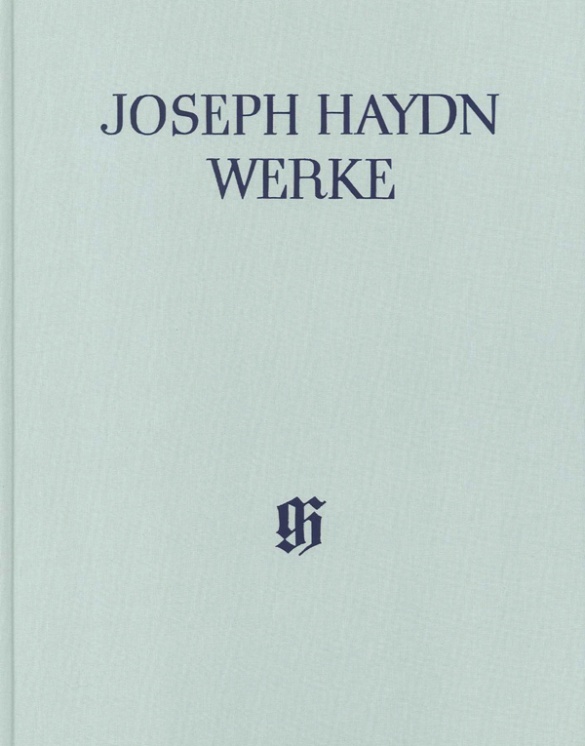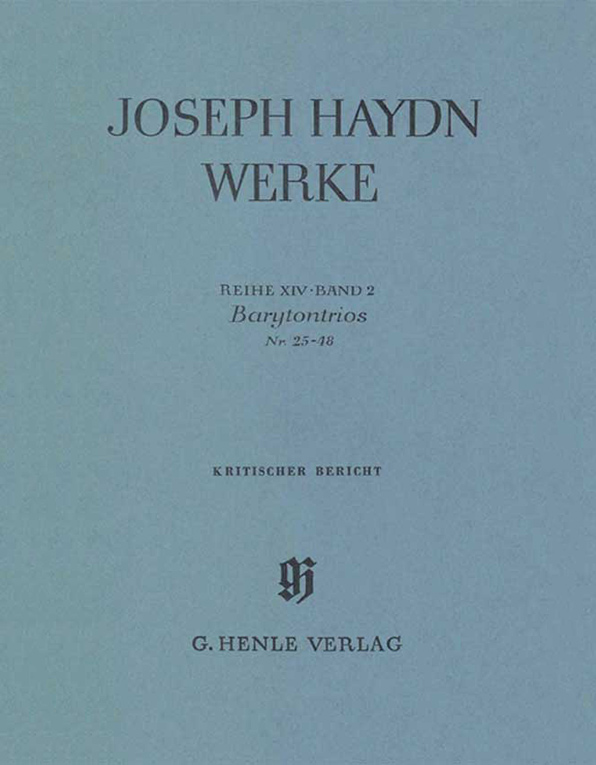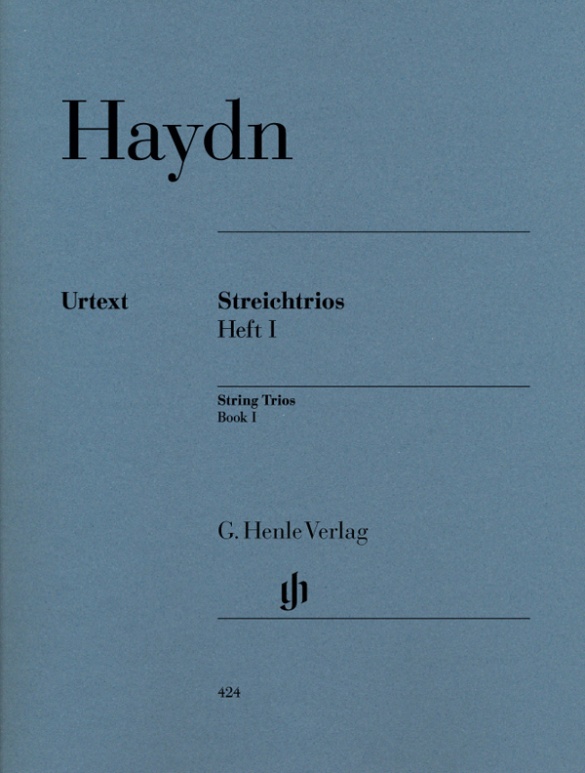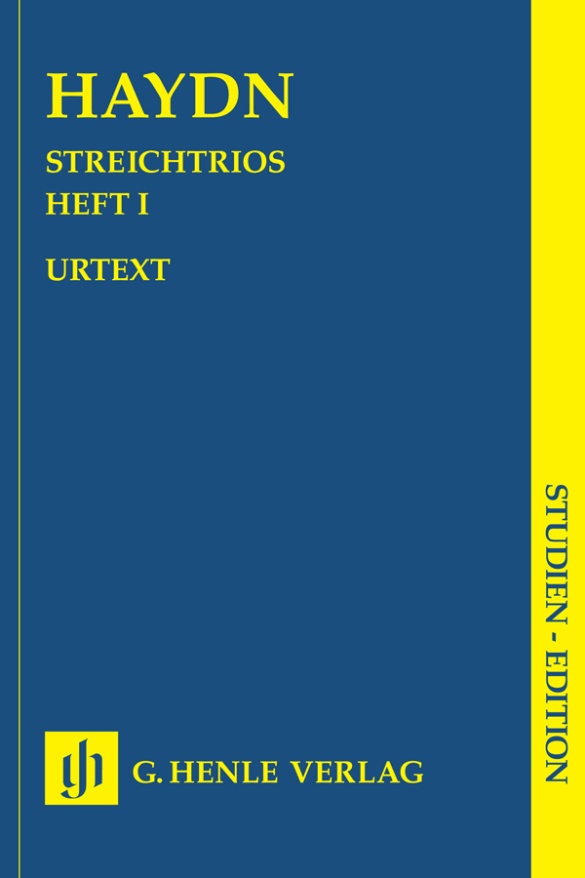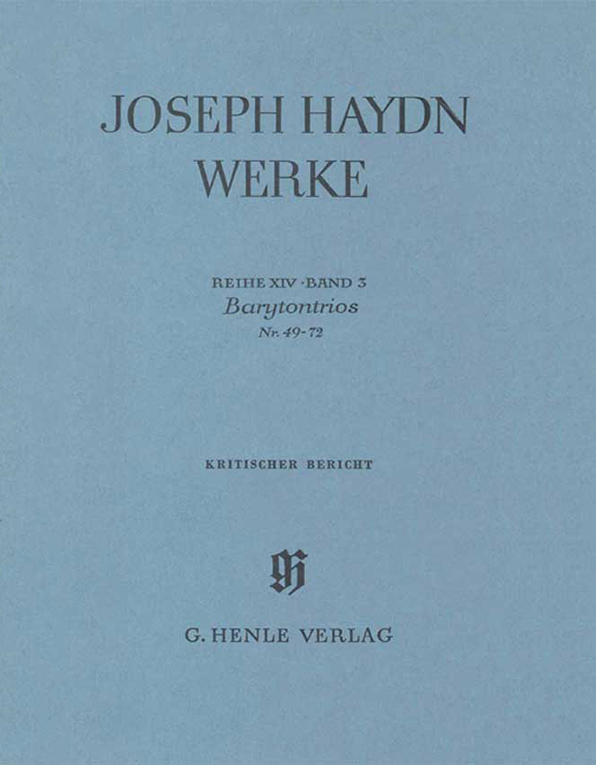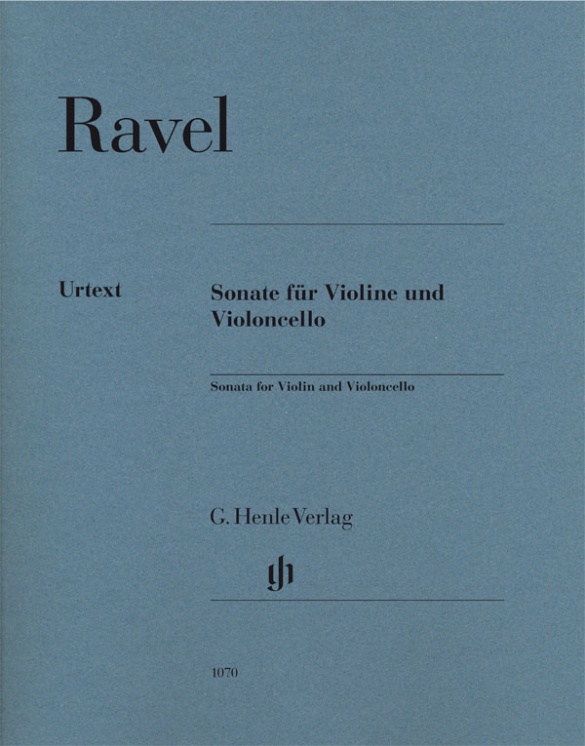

Maurice Ravel
Sonata for Violin and Violoncello
At the first performances of this sonata, composed between 1920 and 1922, even close friends of the composer were perturbed: Following the intoxicating sounds of La Valse, the smaller scoring and modern musical language of the sonata were a shock. Yet this pioneering work has now become a permanent fixture on the concert stage.
To help the players, we are now presenting two performance scores in which the other instrument’s part is also given. Both parts are included in a marked and an unmarked version. The world-renowned musicians Christian Poltéra and Frank Peter Zimmermann provided the fingerings.
Content/Details
About the Composer
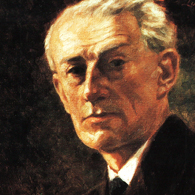
Maurice Ravel
Together with Satie and Debussy, Ravel numbers among the innovators who had a falling out with academic education and created their own avant-garde tonal languages – inspired, in Ravel’s case, by Russian and Spanish music, but also by exoticism – without abandoning tonality. This master of orchestration begins with piano works, which he orchestrates; songs with piano and piano compositions exist on an equal footing in orchestral versions.
| 1875 | Born in Ciboure on March 7; the family moves to Paris that same year. |
| 1882 | Lessons in piano, theory, and composition. |
| 1889 | Beginning of his studies at the Conservatoire de Paris, from which he will never graduate.around 1893 Influence of Chabrier and Satie. |
| 1901 | “Jeux d’eau” for piano, in a new “Impressionist” tonal language, as is “Miroirs” (1904–05). |
| 1903 | “Shéhérazade” for voice and piano/orchestral accompaniment with orientalist tonal elements. |
| 1905 | Scandal surrounding Ravel’s third application for the Prix de Rome. |
| 1907 | Premiere of the “Histoires naturelles” after Jules Renard provokes astonishment in audiences and critics. |
| 1907–08 | Rhapsodie espagnole for orchestra. |
| 1908/10 | “Ma mère l’oye” (“Mother Goose”) for piano, four-hands, as a ballet in 1911. |
| 1911 | Premiere in Paris of his opera “L’Heure espagnole.” |
| 1911/12 | “Valses nobles et sentimentales” for piano/orchestra. Premiere of the ballet “Daphnis et Chloé” in 1912. |
| 1914/19 | “Le tombeau de Couperin” for piano/orchestra anticipates the coming neoclassicism. |
| from 1920 | Many concert tours through Europe and the United States. |
| 1925 | Premiere of his opera “L’Enfant et les sortilèges.” |
| 1928 | Conferral of an honorary doctorate from Oxford University. “Bolero” for orchestra. |
| 1929–31 | Piano Concerto in G major with elements of jazz. |
| 1937 | Death in Paris on December 28. |
About the Authors
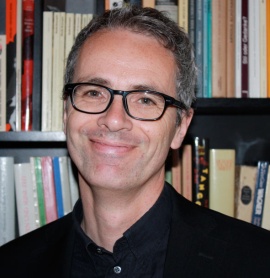
Ulrich Krämer (Editor)
Dr. Ulrich Krämer, born in 1961 in Bielefeld, is Head of the Research Centre at the Arnold Schönberg Complete Edition in Berlin. He read musicology and German in Hamburg and Bloomington and wrote his doctoral thesis under the supervision of Rudolf Stephan on Alban Berg as a pupil of Arnold Schönberg.
In addition to his editorial work, he has been a lecturer at the Hochschule für Musik “Hanns Eisler” and at the Berlin University of the Arts, as well as “Visiting Scholar” at the Graduate Center at the City University New York. Alongside the volumes he has prepared for the Schönberg Complete Edition (including the score of the Gurre Lieder which was awarded the Deutsche Musikeditionspreis), his scholarly publications include editions of Alban Berg’s student compositions and Theodor W. Adorno’s compositions found in his estate, as well as essays and articles on Brahms, Berg, Schönberg, Ravel and Astor Piazzolla.
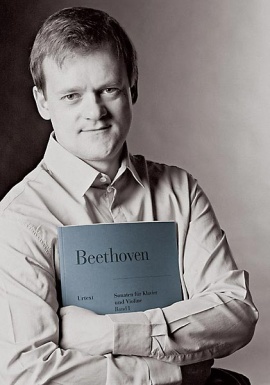
Frank Peter Zimmermann (Fingering and bowing for Violin)
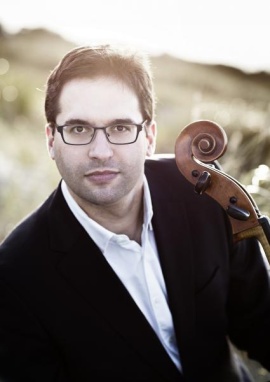
Christian Poltéra (Fingering and bowing for Violoncello)
Product Safety Informations (GPSR)

G. Henle Verlag
Here you can find the information about the manufacturer of the product.G. Henle Verlag e.K.
Forstenrieder Allee 122
81476 München
Germany
info@henle.de
www.henle.com
Wer diese Tour wagt, und sei es nur, um das interessanteste Werk für Geige und Cello einmal für sich kennenzulernen, dem sei die neue Henle-Edition der Ravel-Sonate empfohlen. (...) Gegenüber Durand weist die Henle-Ausgabe Verbesserungen und Neuerungen auf:- ein besonders übersichtliches Notenbild,- Erleichterungen fürs Blättern,- "musikalische" und hilfreiche Fingersätze (in der Cellostimme ermutigt Poltéra z.B. zum klanglich reizvollen Einsatz leerer Saiten, die man als "guter Schüler" vielleicht vermieden hätte...)- ein ausführliches Vorwort und kritische Bemerkungen zu Abweichungen des Notentextes in den bisherigen Ausgaben und- eine Übersetzung sämtlicher französischer Vortragsbezeichnungen.
Das Liebhaberorchester, 2016Die neue Henle-Edition lässt keinen Wunsch offen: es gibt 4 Hefte, alle mit beiden Stimmen. Zwei Hefte sind ohne Zusätze und enthalten nur die Strich- und Saitenbezeichnungen aus den Quellen. Die beiden anderen wurden von Frank Peter Zimmermann resp. Christian Poltéra bezeichnet. (...) Der ganz besondere und nicht hoch genug einzuschätzende Clou für Praktiker aber ist: von allen Stimmen lässt sich spielen, ohne dass kopiert werden muss! Durch 3-Seitendruck und verkleinerter Wiedergabe der jeweils anderen Stimme wurde dies möglich. Fantastisch!
ESTA-Nachrichten, 2016Wer also wissenschaftlich fundiert "schuften" will (so Ravels eigene Wortwahl in Bezug auf seine Proben mit Jourdan-Morhange und Maréchal), um sich das Werk zu eigen zu machen, dem kann diese übersichtliche, auf gründlicher Recherche beruhende und von Fehlern bereinigte Fassung uneingeschränkt empfohlen werden.
Das Orchester, 2014L'edizioni Henle colma finalmente una lacuna editoriale non solo in quanto propone le indicazioni di arcate e diteggiature di due concertisti oggi celebri quali Frank Peter Zimmermann e Christian Poltéra ma anche per quanto riguarda le note introduttive di Ulrich Krämer che inquadrano esaurientemente il brano nel suo contesto storico e stilistico.
Archi Magazine, 2014recommendations
autogenerated_cross_selling
Further editions of this title
Further editions of this title


